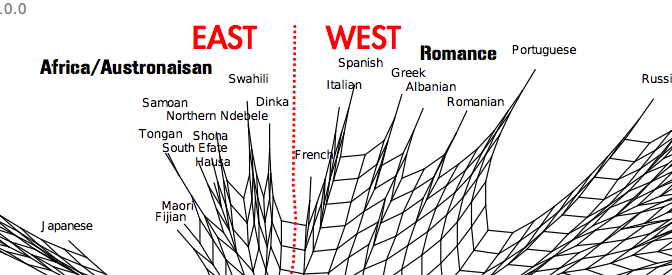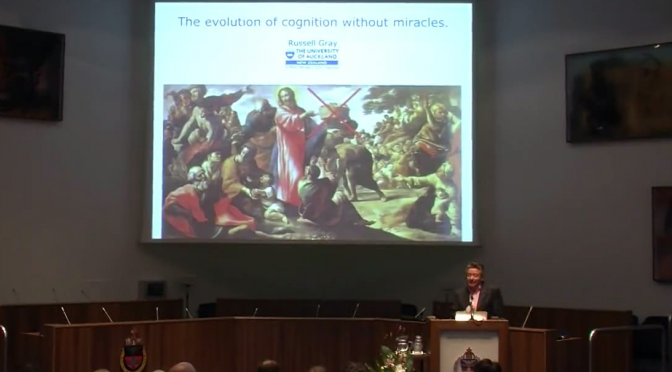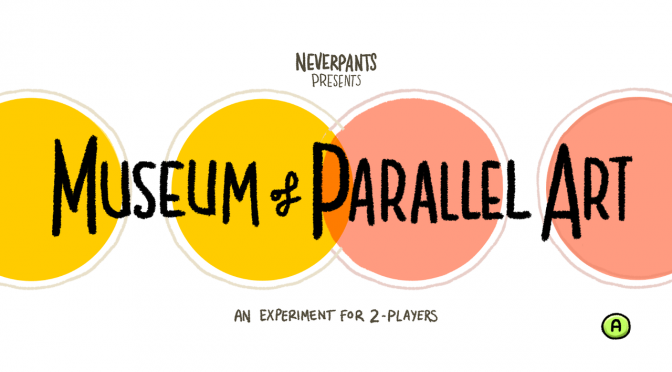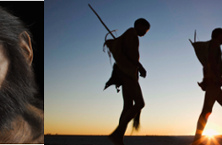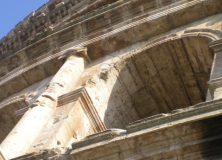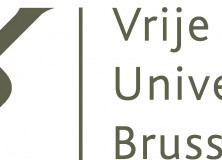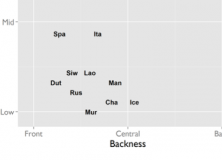There are some interesting speakers at this workshop with some talking about language evolution:
What made us human? Biological and cultural Evolution of Homo sapiens
Erice, Sicily, October 14-19, 2014
Purpose of the workshop:
The science of human evolution has recently been changing rapidly. We know that Homo sapiens is the last surviving branch of a once-luxuriant tree of hominid species. For until very recent times, our lineage shared the planet with several other human species, like Homo neanderthalensis, Homo erectus and Homo floresiensis. Following its biological and anatomical birth in Africa, around 200,000 years ago, Homo sapiens spread around the world following multiple paths of expansion that we can now track using the techniques of molecular biology, ancient DNA studies and paleoanthropology. In this global, ecological and demographic scenario, at one point our species began, somewhere, to express cognitively modern behaviors: a “symbolic intelligence” so peculiar that scientists view it as the hallmark of human creativity and uniqueness itself. Was there a gap between our biological birth and our mental birth? Was the process a gradual or a punctuational one? What triggered the so-called Paleolithic Revolution? How did our cultural evolution interact with our biological evolution? What might have been the role of other human species? Is articulate language our “secret weapon”? In the form of an interdisciplinary meeting involving prominent experts in primatology, paleoanthropology, genetics, anthropology, ethology and philosophy, the Erice International School of Ethology proposes a special workshop on human evolution, to ask, “What exactly was it that made us human?” This is perhaps the most fundamental question of all about human nature, for scientists, philosophers, theologians, and anyone interested in our history.
Speakers:
Quentin Atkinson (University of Auckland); Peter Brown (University of New England, Armidale, Australia); Emiliano Bruner (Centro Nacional de Investigación sobre la Evolución Humana, Sierra de Atapuerca, Burgos); Francesco D’Errico (Université Bordeaux 1); Dean Falk (Florida State University); Pier Francesco Ferrari (University of Parma); John Dupré (University of Exeter); Robert D. Martin (The Field Museum, Chicago); Robert Desalle (American Museum of Natural History, New York); Will Harcourt-Smith (Lehman College, City University of New York); Philip Lieberman (Brown University); Giuseppe Longobardi (University of York); Giorgio Manzi (La Sapienza Università, Rome); Paola Palanza (University of Parma); Stefano Parmigiani (University of Parma); Telmo Pievani (University of Padua); Thomas Plummer (Queens College, City University of New York); Yoel Rak (Tel Aviv University); Jeffrey Schwartz (University of Pittsburgh); Ian Tattersall (American Museum of Natural History, New York), Bernard Wood (George Washington University, Washington DC).
Topics:
Change and diversity in human evolution. The emergence of genus Homo. The earliest stone tools and cognitive implications. Homo floresiensis. Early and Middle Pleistocene hominids of Africa. Brain evolution in genus Homo. Neanderthal origins, biology and lifestyles. Morphology of Homo sapiens and origins in Africa. DNA and putative Neanderthal/Homo sapiens hybridization. Homo sapiens dispersal around the world. Brains, culture and early imagery. Symbolic intelligence. Genes and languages. Language and the evolution of human cognition. The evolution of modern human cognition.
Further info here: https://sites.google.com/site/whatmadeushuman/

